- Home
- Arthur C. Clarke
2001: A Space Odyssey (Arthur C. Clarke Collection: The Odyssey) Page 7
2001: A Space Odyssey (Arthur C. Clarke Collection: The Odyssey) Read online
Page 7
A small bus with an extension tube like a stubby elephant trunk was now nuzzling affectionately up against the spacecraft. A few seconds later, there were bangings and bumpings from outside, followed by the sound of hissing air as connections were made and pressure was equalized. The inner door of the airlock opened, and the welcoming delegation entered.
It was led by Ralph Halvorsen, the Administrator of the Southern Province—which meant not only the Base but also any exploring parties that operated from it. With him was his Chief Scientist, Dr. Roy Michaels, a grizzled little geophysicist whom Floyd knew from previous visits, and half a dozen senior scientists and executives. They greeted him with respectful relief; from the Administrator downward, it was obvious that they looked forward to a chance of unloading some of their worries.
“Very pleased to have you with us, Dr. Floyd,” said Halvorsen. “Did you have a good trip?”
“Excellent,” Floyd answered. “It couldn’t have been better. The crew looked after me very well.”
He exchanged the usual small talk that courtesy demanded while the bus rolled away from the spacecraft; by unspoken agreement, no one mentioned the reason for his visit. After traveling a thousand feet from the landing site, the bus came to a large sign which read:
WELCOME TO CLAVIUS BASE
U.S. Astronautical Engineering Corps 1994
It then dived into a cutting which took it quickly below ground level. A massive door opened ahead, then closed behind them. This happened again, and yet a third time. When the last door had closed, there was a great roaring of air, and they were back in atmosphere once more, in the shirt-sleeve environment of the Base.
After a short walk through a tunnel packed with pipes and cables, and echoing hollowly with rhythmic thumpings and throbbings, they arrived in executive territory, and Floyd found himself back in the familiar environment of typewriters, office computers, girl assistants, wall charts, and ringing telephones. As they paused outside the door labeled ADMINISTRATOR, Halvorsen said diplomatically: “Dr. Floyd and I will be along to the briefing room in a couple of minutes.”
The others nodded, made agreeable sounds, and drifted off down the corridor. But before Halvorsen could usher Floyd into his office, there was an interruption. The door opened, and a small figure hurled itself at the Administrator.
“Daddy! You’ve been Topside! And you promised to take me!”
“Now, Diana,” said Halvorsen, with exasperated tenderness, “I only said I’d take you if I could. But I’ve been very busy meeting Dr. Floyd. Shake hands with him—he’s just come from Earth.”
The little girl—Floyd judged that she was about eight—extended a limp hand. Her face was vaguely familiar, and Floyd suddenly became aware that the Administrator was looking at him with a quizzical smile. With a shock of recollection, he understood why.
“I don’t believe it!” he exclaimed. “When I was here last she was just a baby!”
“She had her fourth birthday last week,” Halvorsen answered proudly. “Children grow fast in this low gravity. But they don’t age so quickly—they’ll live longer than we do.”
Floyd stared in fascination at the self-assured little lady, noting the graceful carriage and the unusually delicate bone structure. “It’s nice to meet you again, Diana,” he said. Then something—perhaps sheer curiosity, perhaps politeness—impelled him to add: “Would you like to go to Earth?”
Her eyes widened with astonishment; then she shook her head.
“It’s a nasty place; you hurt yourself when you fall down. Besides there are too many people.”
So here, Floyd told himself, is the first generation of the Spaceborn; there would be more of them in the years to come. Though there was sadness in this thought, there was also a great hope. When Earth was tamed and tranquil, and perhaps a little tired, there would still be scope for those who loved freedom, for the tough pioneers, the restless adventurers. But their tools would not be ax and gun and canoe and wagon; they would be nuclear power plant and plasma drive and hydroponic farm. The time was fast approaching when Earth, like all mothers, must say farewell to her children.
With a mixture of threats and promises, Halvorsen managed to evict his determined offspring, and led Floyd into the office. The Administrator’s suite was only about fifteen feet square, but it managed to contain all the fittings and status symbols of the typical $50,000-a-year head of a department. Signed photographs of important politicians—including the President of the United States and the Secretary General of the United Nations—adorned one wall, while signed photos of celebrated astronauts covered most of another.
Floyd sank into a comfortable leather chair and was given a glass of “sherry,” courtesy of the lunar biochemical labs. “How’s it going, Ralph?” Floyd asked, sipping the drink with caution, then with approval.
“Not too bad,” Halvorsen replied. “However, there is something you’d better know about, before you go in there.”
“What is it?”
“Well, I suppose you could describe it as a morale problem,” Halvorsen sighed.
“Oh?”
“It isn’t serious yet, but it’s getting there fast.”
“The news blackout,” Floyd said flatly.
“Right,” Halvorsen replied. “My people are getting very steamed up about it. After all, most of them have families back on Earth; they probably believe they’re all dead of moonplague.”
“I’m sorry about that,” said Floyd, “but no one could think of a better cover story, and so far it’s worked. By the way—I met Moisevitch at the Space Station, and even he bought it.”
“Well, that should make Security happy.”
“Not too happy—he’d heard of TMA-1; rumors are beginning to leak out. But we just can’t issue any statement, until we know what the damn thing is and whether our Chinese friends are behind it.”
“Dr. Michaels thinks he has the answer to that. He’s dying to tell you.”
Floyd drained his glass. “And I’m dying to hear him. Let’s go.”
CHAPTER 11
Anomaly
The briefing took place in a large rectangular chamber that could hold a hundred people with ease. It was equipped with the latest optical and electronic displays and would have looked like a model conference room but for the numerous posters, pinups, notices, and amateur paintings, which indicated that it was also the center of the local cultural life. Floyd was particularly struck by a collection of signs, obviously assembled with loving care, which carried such messages as PLEASE KEEP OFF THE GRASS… NO PARKING ON EVEN DAYS… DEFENSE DE FUMER… TO THE BEACH… CATTLE CROSSING… SOFT SHOULDERS and DO NOT FEED THE ANIMALS. If these were genuine—as they certainly appeared to be—their transportation from Earth had cost a small fortune. There was a touching defiance about them; on this hostile world, men could still joke about the things they had been forced to leave behind—and which their children would never miss.
A crowd of forty or fifty people was waiting for Floyd, and everyone rose politely as he entered behind the Administrator. As he nodded at several familiar faces, Floyd whispered to Halvorsen: “I’d like to say a few words before the briefing.”
Floyd sat down in the front row, while the Administrator ascended the rostrum and looked round his audience.
“Ladies and gentlemen,” Halvorsen began, “I needn’t tell you that this is a very important occasion. We are delighted to have Dr. Heywood Floyd with us. We all know him by reputation, and many of us are acquainted with him personally. He has just completed a special flight from Earth to be here, and before the briefing he has a few words for us. Dr. Floyd.”
Floyd walked to the rostrum amid a sprinkling of polite applause, surveyed the audience with a smile, and said: “Thank you—I only want to say this. The President has asked me to convey his appreciation of your outstanding work, which we hope the world will soon be able to recognize. I’m quite aware,” he continued carefully, “that some of you—perhaps most of you—are anxious
that the present veil of secrecy be withdrawn; you would not be scientists if you thought otherwise.”
He caught a glimpse of Dr. Michaels, whose face was creased in a slight frown which brought out a long scar down his right cheek—presumably the aftermath of some accident in space. The geologist, he was well aware, had been protesting vigorously against what he called this “cops and robbers nonsense.”
“But I would remind you,” Floyd continued, “that this is a quite extraordinary situation. We must be absolutely sure of our own facts; if we make errors now, there may be no second chance—so please be patient a little longer. Those are also the wishes of the President.
“That’s all I have to say. Now I’m ready for your report.”
He walked back to his seat; the Administrator said, “Thank you very much, Dr. Floyd,” and nodded, rather brusquely, to his Chief Scientist. On cue, Dr. Michaels walked up to the rostrum, and the lights faded out.
A photograph of the Moon flashed onto the screen. At the very center of the disk was a brilliant white crater ring, from which a striking pattern of rays fanned out. It looked exactly as if someone had hurled a bag of flour at the face of the Moon, and it had spattered out in all directions.
“This is Tycho,” said Michaels, pointing to the central crater. “On this vertical photograph Tycho is even more conspicuous than when seen from Earth; then it’s rather near the edge of the Moon. But observed from this viewpoint—looking straight down from a thousand miles up—you’ll see how it dominates an entire hemisphere.”
He let Floyd absorb this unfamiliar view of a familiar object, then continued: “During the past year we have been conducting a magnetic survey of the region, from a low-level satellite. It was completed only last month, and this is the result—the map that started all the trouble.”
Another picture flashed on the screen; it looked like a contour map, though it showed magnetic intensity, not heights above sea level. For the most part, the lines were roughly parallel and spaced well apart; but in one corner of the map they became suddenly packed together, to form a series of concentric circles—like a drawing of a knothole in a piece of wood.
Even to an untrained eye, it was obvious that something peculiar had happened to the Moon’s magnetic field in this region; and in large letters across the bottom of the map were the words: TYCHO MAGNETIC ANOMALY-ONE (TMA-1). Stamped on the top right was CLASSIFIED.
“At first we thought it might be an outcrop of magnetic rock, but all the geological evidence was against it. And not even a big nickel-iron meteorite could produce a field as intense as this; so we decided to have a look.
“The first party discovered nothing—just the usual level terrain, buried beneath a very thin layer of moondust. They sank a drill in the exact center of the magnetic field to get a core sample for study. Twenty feet down, the drill stopped. So the survey party started to dig—not an easy job in spacesuits, as I can assure you.
“What they found brought them back to Base in a hurry. We sent out a bigger team, with better equipment. They excavated for two weeks—with the result you know.”
The darkened assembly room became suddenly hushed and expectant as the picture on the screen changed. Though everyone had seen it many times, there was not a person who failed to crane forward as if hoping to find new details. On Earth and Moon, less than a hundred people had so far been allowed to set eyes on this photograph.
It showed a man in a bright red and yellow spacesuit standing at the bottom of an excavation and supporting a surveyor’s rod marked off in tenths of a meter. It was obviously a night shot, and might have been taken anywhere on the Moon or Mars. But until now no planet had ever produced a scene like this.
The object before which the spacesuited man was posing was a vertical slab of jet-black material, about ten feet high and five feet wide: it reminded Floyd, somewhat ominously, of a giant tombstone. Perfectly sharp-edged and symmetrical, it was so black it seemed to have swallowed up the light falling upon it; there was no surface detail at all. It was impossible to tell whether it was made of stone or metal or plastic—or some material altogether unknown to man.
“TMA-1,” Dr. Michaels declared, almost reverently. “It looks brand new, doesn’t it? I can hardly blame those who thought it was just a few years old, and tried to connect it with the third Chinese Expedition, back in ’98. But I never believed that—and now we’ve been able to date it positively, from local geological evidence.
“My colleagues and I, Dr. Floyd, will stake our reputations on this. TMA-1 has nothing to do with the Chinese. Indeed, it has nothing to do with the human race—for when it was buried, there were no humans.
“You see, it is approximately three million years old. What you are now looking at is the first evidence of intelligent life beyond the Earth.”
CHAPTER 12
Journey by Earthlight
MACRO-CRATER PROVINCE: Extends S from near center of visible face of moon, E of Central Crater Province. Densely pocked with impact craters; many large, and including the largest on moon; in N some craters fractured from impact forming Mare Imbrium. Rough surfaces almost everywhere, except for some crater bottoms. Most surfaces in slopes, mostly 10° to 12°; some crater bottoms nearly level.
LANDING AND MOVEMENT: Landing generally difficult because of rough, sloping surfaces; less difficult in some level crater bottoms. Movement possible almost everywhere but route selection required; less difficult on some level crater bottoms.
CONSTRUCTION: Generally moderately difficult because of slope, and numerous large blocks in loose material; excavation of lava difficult in some crater bottoms.
TYCHO: Post-Maria crater, 54 miles diameter, rim 7,900 feet above surroundings; bottom 12,000 feet deep; has the most prominent ray system on the moon, some rays extending more than 500 miles.*
The mobile lab now rolling across the crater plain at fifty miles an hour looked rather like an outsize trailer mounted on eight flex-wheels. But it was very much more than this; it was a self-contained base in which twenty men could live and work for several weeks. Indeed, it was virtually a landgoing spaceship—and in an emergency it could even fly. If it came to a crevasse or canyon which was too large to detour, and too steep to enter, it could hop across the obstacle on its four underjets.
As he peered out of the window, Floyd could see stretching ahead of him a well-defined trail, where dozens of vehicles had left a hard-packed band in the friable surface of the Moon. At regular intervals along the track were tall, slender rods, each carrying a flashing light. No one could possibly get lost on the 200-mile journey from Clavius Base to TMA-1, even though it was still night and the sun would not rise for several hours.
The stars overhead were only a little brighter, or more numerous, than on a clear night from the high plateaus of New Mexico or Colorado. But there were two things in that coal-black sky that destroyed any illusion of Earth.
The first was Earth itself—a blazing beacon hanging above the northern horizon. The light pouring down from the giant half-globe was dozens of times more brilliant than the full moon, and it covered all this land with a cold, blue-green phosphorescence.
The second celestial apparition was a faint, pearly cone of light slanting up the eastern sky. It became brighter and brighter toward the horizon, hinting of great fires just concealed below the edge of the Moon. Here was a pale glory that no man had ever seen from Earth, save during the few moments of a total eclipse. It was the corona, harbinger of the lunar dawn, giving notice that before long the sun would smite this sleeping land.
As he sat with Halvorsen and Michaels in the forward observation lounge, immediately beneath the driver’s position, Floyd found his thoughts turning again and again to the three-million-year-wide gulf that had just opened up before him. Like all scientifically literate men, he was used to considering far longer periods of time—but they had concerned only the movements of stars and the slow cycles of the inanimate universe. Mind or intelligence had not been involved; those e
ons were empty of all that touched the emotions.
Three million years! The infinitely crowded panorama of written history, with its empires and its kings, its triumphs and its tragedies, covered barely one thousandth of this appalling span of time. Not only Man himself, but most of the animals now alive on Earth, did not even exist when this black enigma was so carefully buried here, in the most brilliant and most spectacular of all the craters of the Moon.
That it had been buried, and quite deliberately, Dr. Michaels was absolutely sure. “At first,” he explained, “I rather hoped it might mark the site of some underground structure, but our latest excavations have eliminated that. It’s sitting on a wide platform of the same black material, with undisturbed rock beneath it. The—creatures—who designed it wanted to make sure it stayed put, barring major moonquakes. They were building for eternity.”
There was triumph, and yet sadness, in Michaels’s voice, and Floyd could share both emotions. At last, one of Man’s oldest questions had been answered; here was the proof, beyond all shadow of doubt, that his was not the only intelligence that the universe had brought forth. But with that knowledge there came again an aching awareness of the immensity of Time. Whatever had passed this way had missed mankind by a hundred thousand generations. Perhaps, Floyd told himself, it was just as well. And yet—what we might have learned from creatures who could cross space, while our ancestors were still living in trees!
A few hundred yards ahead, a signpost was coming up over the Moon’s strangely close horizon. At its base was a tent-shaped structure covered with shining silver foil, obviously for protection against the fierce heat of day. As the bus rolled by, Floyd was able to read in the brilliant earthlight:
EMERGENCY DEPOT No. 3
20 Kilos Lox
10 Kilos Water

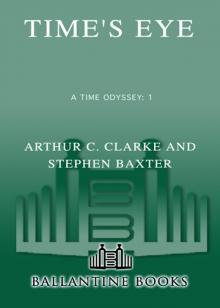 Time's Eye
Time's Eye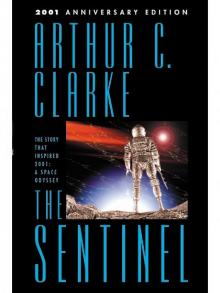 The Sentinel
The Sentinel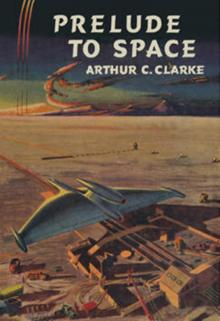 Prelude to Space
Prelude to Space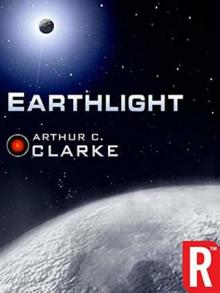 Earthlight (Arthur C. Clarke Collection)
Earthlight (Arthur C. Clarke Collection) 2001: A Space Odyssey
2001: A Space Odyssey Against the Fall of Night
Against the Fall of Night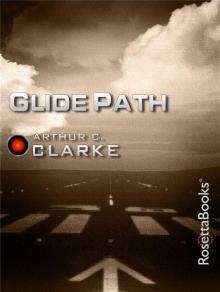 Glide Path
Glide Path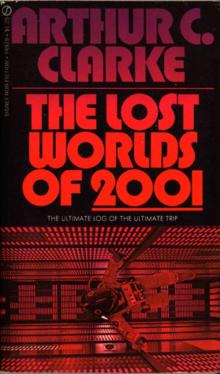 The Lost Worlds of 2001
The Lost Worlds of 2001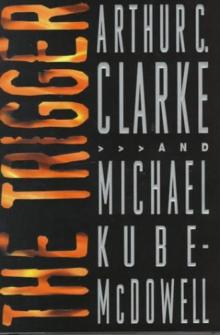 The Trigger
The Trigger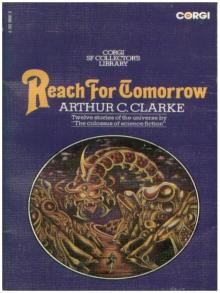 Reach for Tomorrow
Reach for Tomorrow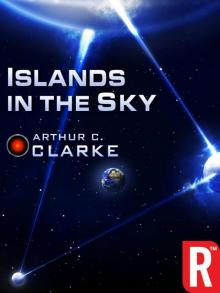 Islands in the Sky
Islands in the Sky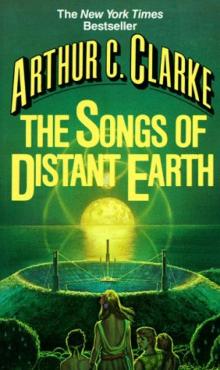 The Songs of Distant Earth
The Songs of Distant Earth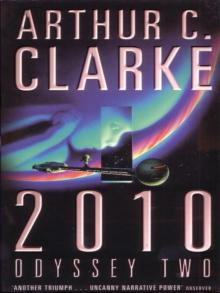 2010: Odyssey Two
2010: Odyssey Two Childhood's End
Childhood's End 3001: The Final Odyssey
3001: The Final Odyssey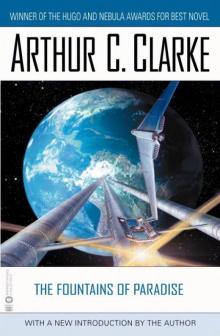 The Fountains of Paradise
The Fountains of Paradise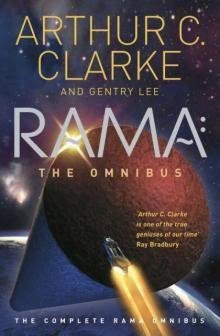 Rama: The Omnibus
Rama: The Omnibus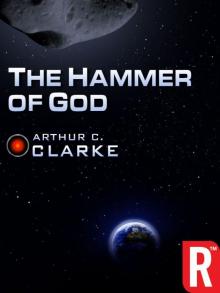 The Hammer of God
The Hammer of God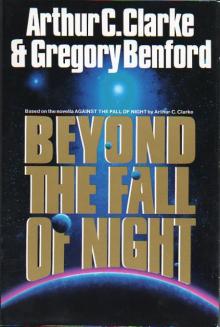 Beyond the Fall of Night
Beyond the Fall of Night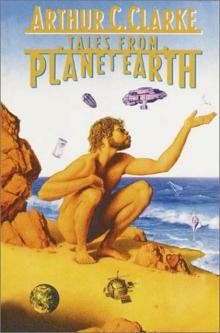 Tales From Planet Earth
Tales From Planet Earth 2061: Odyssey Three
2061: Odyssey Three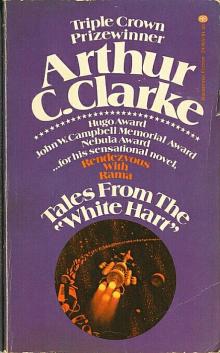 Tales From the White Hart
Tales From the White Hart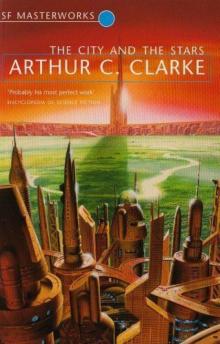 The City and the Stars/The Sands of Mars
The City and the Stars/The Sands of Mars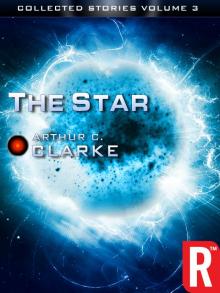 The Star
The Star Imperial Earth
Imperial Earth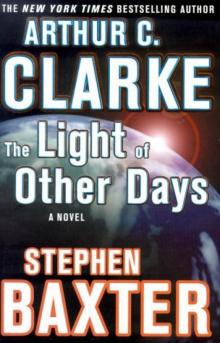 The Light of Other Days
The Light of Other Days Firstborn
Firstborn The Other Side of the Sky
The Other Side of the Sky Cradle
Cradle The Wind From the Sun
The Wind From the Sun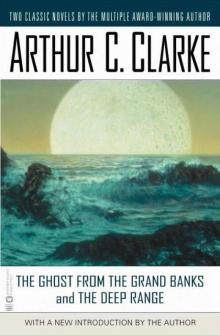 The Ghost From the Grand Banks and the Deep Range
The Ghost From the Grand Banks and the Deep Range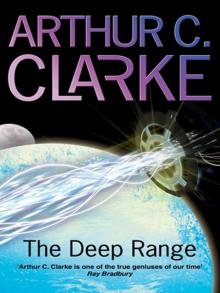 The Deep Range
The Deep Range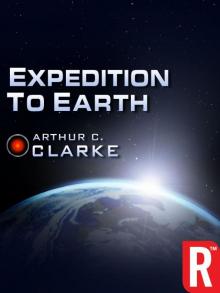 Expedition to Earth
Expedition to Earth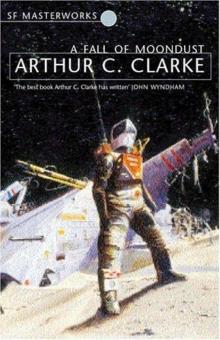 A Fall of Moondust
A Fall of Moondust Dolphin Island (Arthur C. Clarke Collection)
Dolphin Island (Arthur C. Clarke Collection)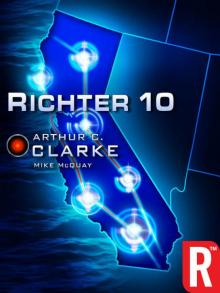 Richter 10
Richter 10 The City and the Stars
The City and the Stars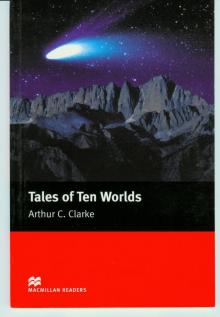 Tales of Ten Worlds
Tales of Ten Worlds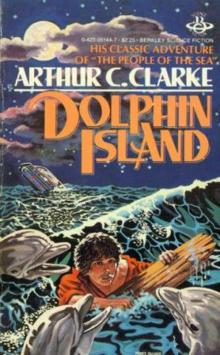 Dolphin Island
Dolphin Island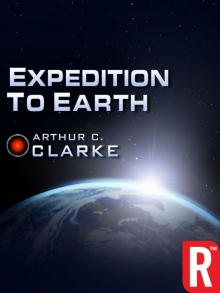 Expedition to Earth (Arthur C. Clarke Collection: Short Stories)
Expedition to Earth (Arthur C. Clarke Collection: Short Stories) Sunstorm
Sunstorm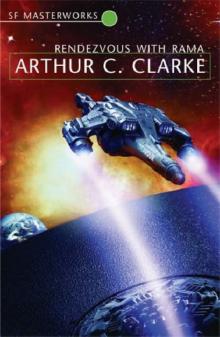 Rendezvous with Rama
Rendezvous with Rama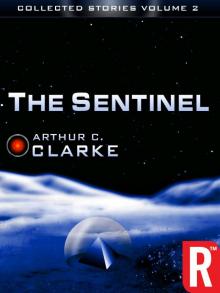 The Collected Stories of Arthur C. Clarke
The Collected Stories of Arthur C. Clarke Trouble with the Natives
Trouble with the Natives Rama Revealed r-4
Rama Revealed r-4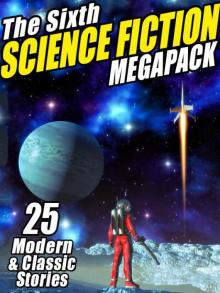 The Sixth Science Fiction Megapack
The Sixth Science Fiction Megapack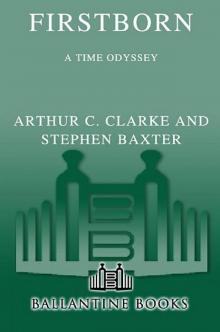 Firstborn to-3
Firstborn to-3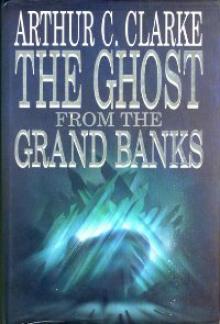 The Ghost from the Grand Banks
The Ghost from the Grand Banks Into the Comet
Into the Comet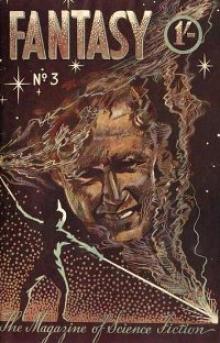 The Fires Within
The Fires Within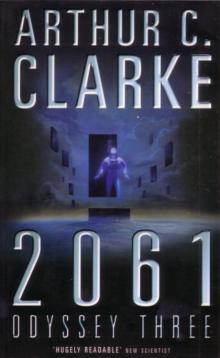 2061: Odyssey 3
2061: Odyssey 3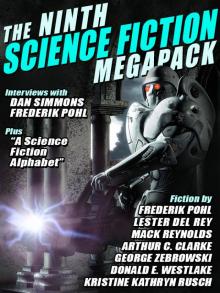 The Ninth Science Fiction Megapack
The Ninth Science Fiction Megapack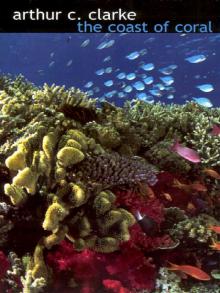 The Coast of Coral
The Coast of Coral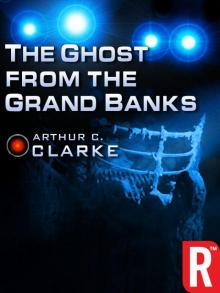 The Ghost from the Grand Banks (Arthur C. Clarke Collection)
The Ghost from the Grand Banks (Arthur C. Clarke Collection)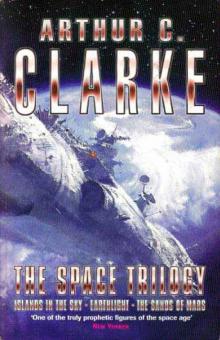 The Space Trilogy
The Space Trilogy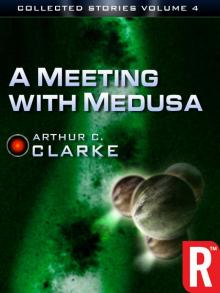 A Meeting With Medusa
A Meeting With Medusa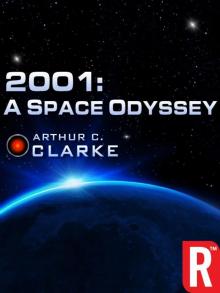 2001: A Space Odyssey (Arthur C. Clarke Collection: The Odyssey)
2001: A Space Odyssey (Arthur C. Clarke Collection: The Odyssey)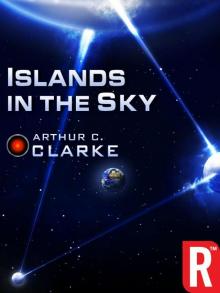 Islands in the Sky (Arthur C. Clarke Collection)
Islands in the Sky (Arthur C. Clarke Collection)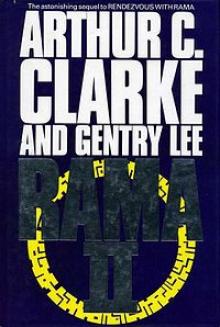 Rama II r-2
Rama II r-2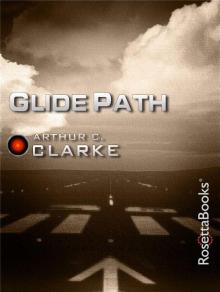 Glide Path (Arthur C. Clarke Collection)
Glide Path (Arthur C. Clarke Collection)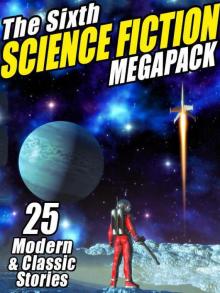 The Sixth Science Fiction Megapack: 25 Classic and Modern Science Fiction Stories
The Sixth Science Fiction Megapack: 25 Classic and Modern Science Fiction Stories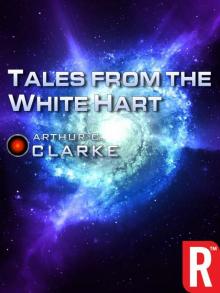 Tales from the White Hart (Arthur C. Clarke Collection: Short Stories)
Tales from the White Hart (Arthur C. Clarke Collection: Short Stories) The Reluctant Orchid
The Reluctant Orchid